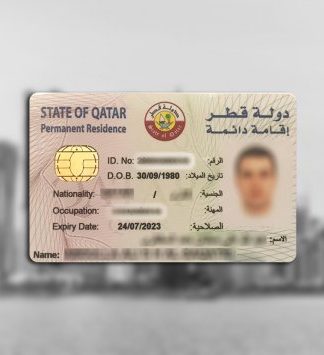CONFLICTSGERMANY
Ukrainian soldiers find remains of German WWII soldiers
Frank Hofmann
21 hours ago21 hours ago
The work of the German War Graves Commission has continued in the midst of the ongoing war in Ukraine, recalling the horrors of World War II in that country. Ukrainian soldiers have helped report new findings.
https://p.dw.com/p/4QhsX
The tip-off came from the pastor of the local church in the small town of Sopiv, western Ukraine: A German medical plane was said to have crashed near the village in the region of Ivanko-Frankivsk oblast during World War II, he told the German War Graves Commission.
“The inhabitants would have recovered the bodies scattered all over the field and buried them behind the church,” the pastor said, according to a commission statement. After Ukraine’s independence in 1991, villagers are said to have then erected wooden crosses at the burial ground.
Last month, in the midst of the ongoing war in Ukraine,experts from the commission disinterred the bones of 41 Wehrmacht soldiers there.
Ukrainian soldiers discover Wehrmacht remains
The horrors of the Nazi invasion have struck a chord with today’s war in Ukraine, especially following a similar find on the northern outskirts of the capital, Kyiv. There, on a site near the town of Vyshhorod, located directly on the dam that regulates the inflow of the Dnieper River to Kyiv, Ukrainian servicemen found the remains of two Wehrmacht soldiers in April last year.
“A trench was excavated, and bones were found first, and then an identification marker, by which the soldiers recognized that they were German war dead,” Vladimir Ioseliani, the War Graves Commission’s reburial leader responsible for Ukraine, told DW.
At the time, a 40-kilometer-long (25 miles) Russian military column was jammed not far from Vyshhorod on its way to the capital. The Ukrainian servicemen and women then “investigated on their own initiative and found out there was a commission representation in Ukraine, and they got in touch with us, and we arranged to meet,” Ioseliani said.
But this find was an isolated case last year, when the German association stopped its work in the embattled areas of Ukraine and retreated to relatively safe areas in the west and center of the country.
Rescuers work at a site of a residential building destroyed by a Russian missile attack, as Russia’s attack on Ukraine continues, in the town of VyshhorodRescuers work at a site of a residential building destroyed by a Russian missile attack, as Russia’s attack on Ukraine continues, in the town of Vyshhorod
Vyshhorod has seen its share of horrors in the current warImage: Vladyslav Musiienko/REUTERS
816 German war dead recovered
Nevertheless, the commission was able to recover 816 German war dead from World War II, the perpetrators of Nazi dictator Adolf Hitler’s invasion of Ukraine, then part of the Soviet Union. According to commission figures, that was half as many as in previous years. “It has been very difficult for me, I must say honestly,” said Ioseliani.
When the war began, he watched the destruction on television from Germany, “and I could say: I was on that square in Kharkiv just two months ago.” Then there were only ruins standing there — “that is a very, very heavy burden,” says Iosiliani, who himself comes from the former Soviet republic of Georgia. Suddenly, the historical examination of World War II became mixed with the horrors of this current war, which today brings death and flight to Ukraine every day.
The German War Graves Commission was founded during the Weimar Republic, Germany’s first democratic state, after World War I, initially to recover and bury the war dead from the battles of Verdun and Ypres among others. After World War II, the association continued its work first in West Germany and later in neighboring western European countries.
After the fall of the Iron Curtain, the commission was able to extend its work to the countries of eastern Central Europe and the former Soviet Union. In other words, primarily to Poland, Belarus, and Ukraine, but also to Russia — all countries that had been overrun in a brutal campaign of extermination by the Wehrmacht under Adolf Hitler.
Ukraine faces huge task of clearing landmines
03:41
7 steps to identification
The procedure for identifying remains follows a set procedure, commission spokesperson Diane Tempel-Bornett told DW. Whether the remains are of German origin can usually be determined fairly quickly: The lace-up boots of Wehrmacht soldiers, for instance, are often still preserved 78 years after the end of the war.
But identifying the soldiers themselves is also important. “German soldiers almost always wore dog tags,” she said. “But that doesn’t automatically mean if someone has an identification tag it’s that person.”
More than seven steps are needed to identify a person: Age can often be reconstructed based on the state of the teeth or the condition of the skull. “By the length of the femur, you can determine approximate height,” said Tempel-Bornett. The sites are then cross-referenced with information from Germany’s federal archives. These old Wehrmacht files are also often the start of excavation work. However, even the smallest doubts can mean rejecting an identification, the Volksbund spokeswoman said.
Remaining family members in Germany are always informed when the identity of fallen German soldiers can be established beyond doubt.
The remains are then re-buried in various special commission cemeteries throughout Europe, often in the presence of relatives from Germany — including in Ukraine. “Before the war, we interred people twice a year in each cemetery,” says Ioseliani. Not in 2022, though, for safety reasons: The commission is now hoping for an end to Russia’s war against Ukraine so it can bury the 816 war dead unearthed last year.
Mykola Berdnyk contributed to this report, which was originally written in German
While you’re here: Every Tuesday, DW editors round up what is happening in German politics and society. You can sign up here for the weekly newsletter Berlin Briefing.






























